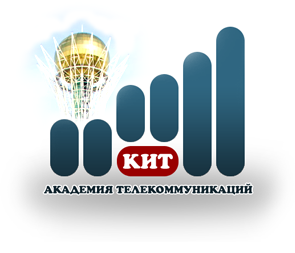| Быстрые ссылки: Перейти на главную | Список курсов | Расписание | Заявка на курс | Ответы на вопросы экспертов | Ищите что-то конкретное? | Контакты ↓ |
☎ +7 (7172) 46 97 51
☎ +7 (777) 241 72 98 ☎ +7 (747) 716 21 22 nata  ciscotrain.kz ciscotrain.kzasem  ciscotrain.kz ciscotrain.kzinfo  ciscotrain.kz ciscotrain.kzraushan  ciscotrain.kz ciscotrain.kzКазахстан, г. Астана, ул. Иманбаевой 8
|
Programming with the MS .NET Framework Visual C# город Астана
The goal of this course is to help application developers understand the Microsoft.NET Framework. In addition to offering an overview of the .NET Framework and an Description to key concepts and terminology, the course provides a series of labs, which introduce and explain .NET Framework features that are used to code, debug, tune, and deploy applications. Course Objectives At the end of the course, students will be able to:
Audience This course is intended for experienced, professional software developers including those employed by independent software vendors or those who work on corporate enterprise development teams. Most students will be Microsoft Visual C++ (or C++) and Java developers. Prerequisites Before attending this course, students should be experienced professional software developers and have a basic understanding of the C# language. Содержание курсаModule 1: Overview of the Microsoft .NET Framework The following topics are covered in this module:
After completing this module, you will be able to list the major elements of the .NET Framework. This includes:
Module 2: Description to a Managed Execution Environment
After completing this module, you will be able to explain the main concepts behind the common language runtime and use the features of the common language runtime to create a simple application. This includes:
Module 3: Working with Components The following topics are covered in this module:
After completing this module, you will be able to create and use components in Windows Form-based and ASP.NET-based applications. This includes:
Module 4: Deployment and Versioning The following topics are covered in this module:
After completing this module, you will be able to use the deployment and versioning features of the .NET common language runtime to deploy multiple versions of a component. This includes:
Module 5: Common Type System The following topics are covered in this module:
After completing this module, you will be able to create, use, and extend types. This includes:
Module 6: Working with Types The following topics are covered in this module:
After completing this module, you will be able to create classes and interfaces that are functionally efficient and appropriate for given programming scenarios. This includes:
Module 7: Strings, Arrays, and Collections The following topics are covered in this module:
After completing this module, you will be able to use the .NET Framework class library to create and manage strings, arrays, collections, and enumerators. This includes:
Module 8: Delegates and Events The following topics are covered in this module:
After completing this module, you will be able to use delegates and events to have an event sender object signal the occurrence of an action to an event receiver object. This includes:
Module 9: Memory and resource Management The following topics are covered in this module:
After completing this module, you will be able to describe and control how memory and other resources are managed in the .NET Framework. This includes:
Module 10: Data Streams and Files The following topics are covered in this module:
After completing this module, you will be able to read from and write to data streams, files, and the Internet. This includes:
Module 11: Internet Access The following topics are covered in this module:
After completing this module, you will be able to use the .NET Framework classes to work with data over the Internet. This includes:
Module 12: Serialization The following topics are covered in this module:
After completing this module, you will be able to serialize and deserialize an object graph. This includes:
Module 13: Remoting and XML Web Services The following topics are covered in this module:
After completing this module, you will be able to create distributed applications by means of XML Web services and Object Remoting. This includes:
|





